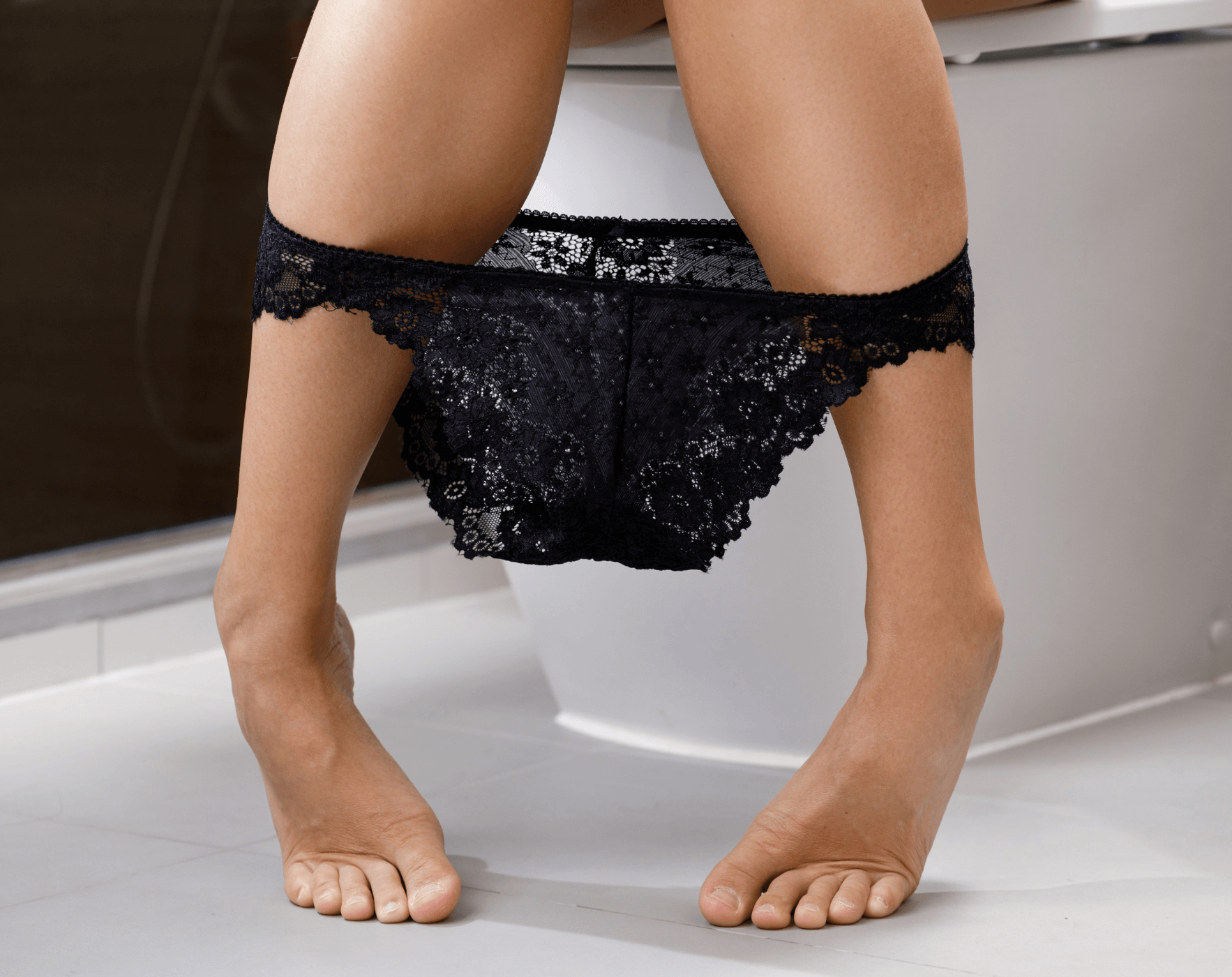
Who wants to admit that they’re struggling – and sometimes failing – to get to the bathroom in time? Let’s face it ladies, Multiple Sclerosis urinary incontinence, is not fun. Yet, it’s a common symptom of MS.
As your fellow MS sister and a Nutritionist specializing in Multiple Sclerosis, let’s talk about tips and strategies to manage it.
How Multiple Sclerosis Affects the Bladder
First, let’s understand why and how MS causes urinary frequency, urgency and incontinence.
MS causes our immune system to mistakenly attack the protective covering of nerve fibers, known as the myelin sheath, within our central nervous system.
This attack cause inflammation and damage, known as lesions, that disrupts the communication between our brain and our body.
Disrupted Nerve Signals
Among the many nerves that can experience damage are the nerves that control our bladder.
These nerves signal when it’s time to pee and tell the bladder to contract and empty. If these nerves are damaged, the brain can’t get the messages to the bladder to function properly.
As a result, people with MS may experience overactivity – causing urinary frequency and urgency, urinary retention, and consistent signals to the bladder.
Bladder Muscle Dysfunction
This damage can also cause the muscles of the bladder to act up.
They might contract too often, causing that sudden, strong urge to pee – that’s urge incontinence.
On the other hand, they might not work hard enough, leading to an overfilled bladder and, you guessed it, leakage.
Spasticity and Mobility Issues
Further compounding this issue, MS can cause muscle spasticity and weakness, impacting the pelvic floor muscles crucial to bladder control. Weak pelvic floor muscles can lead to stress incontinence, while spasticity can make it more challenging to fully empty the bladder.
Urinary Tract Infections (UTIs)
MS can also make us more susceptible to urinary tract infections (UTIs), due to difficulties with bladder emptying. These UTIs can further exacerbate urinary symptoms, including incontinence.
It’s no wonder many of us living with MS are navigating urinary issues.
So, the question is, how do we manage it?
Time to Break the Silence About Multiple Sclerosis Urinary Incontinence
You might feel like you’re the only one struggling with it, but let me assure you, you’re not alone. This is a part of life with MS for many of us, and it’s important that we talk about it.
Too many women silently struggle, not realizing there are many options out there to help manage, and even improve, these symptoms.
Exploring Your Options for Multiple Sclerosis Urinary Incontinence
As with everything MS-related, there’s no one-size-fits-all solution, but that doesn’t mean we’re out of options.
There are actually a lot of strategies and tools that can make a world of difference when it comes to managing Multiple Sclerosis urinary incontinence.
- Bladder Training: This involves scheduling your bathroom visits, instead of waiting for the urge to pee. Start by noting down your current habits, then gradually extend the time between your trips to the toilet. Over time, your bladder can learn to hold more urine before signaling the need to empty.
- Pelvic Floor Therapy: Remember those pelvic floor muscles we talked about? There are physical therapists who are trained specifically in the pelvic floor who can guide you through exercises to strengthen them, helping you to have better bladder control. This can be one of the most effective ways to address Multiple Sclerosis urinary incontinence. Once you’ve been evaluated by a therapist there are devices you can use in the comfort of your home. (Several of my coaching clients have had great results from these.)
And of course, the yoga instructor in me loves that there are yoga for the pelvic floor too! - Dietary Changes: As a Nutritionist specializing in MS, I also have to give food a plug! Certain foods and drinks, like caffeine, alcohol, or spicy foods, can irritate the bladder. Keeping a food diary can help identify triggers and guide dietary changes to reduce symptoms.
- Medications: Depending on your specific symptoms, your doctor may prescribe medication to relax your bladder muscles, reducing those sudden urges, or to help empty the bladder more fully. Just be sure to talk to your doctor about all the pros and cons so you’re aware of any potential side effects.
- Catheterization: In more severe cases of Multiple Sclerosis urinary incontinence, intermittent self-catheterization can help empty the bladder completely, reducing the risk of UTIs and overflow incontinence.
- Surgical Options: For some, surgery may be a consideration when other treatments don’t provide sufficient relief. This is something to discuss in-depth with your healthcare provider.
This might feel a bit overwhelming, and that’s understandable.
Remember my motto – start simple. Take a moment to think about which of these suggestions speaks to you the most. Maybe it’s bladder training, or perhaps the idea of pelvic floor therapy intrigues you. Choose that.
Now, ask yourself – what is the first step you can take to start putting this into action? Perhaps it’s researching local physical therapists specializing in pelvic floor therapy. Or maybe it’s deciding to limit that cup of coffee. Whatever it is, select one action and begin there.
Remember, it’s your journey, and every step you take towards managing your symptoms is a victory. And I’m right here cheering you on.
If you liked this article, you also might enjoy Multiple Sclerosis Hydration: How to Stay Hydrated without Increasing Urinary Frequency.
+ show Comments
- Hide Comments
add a comment